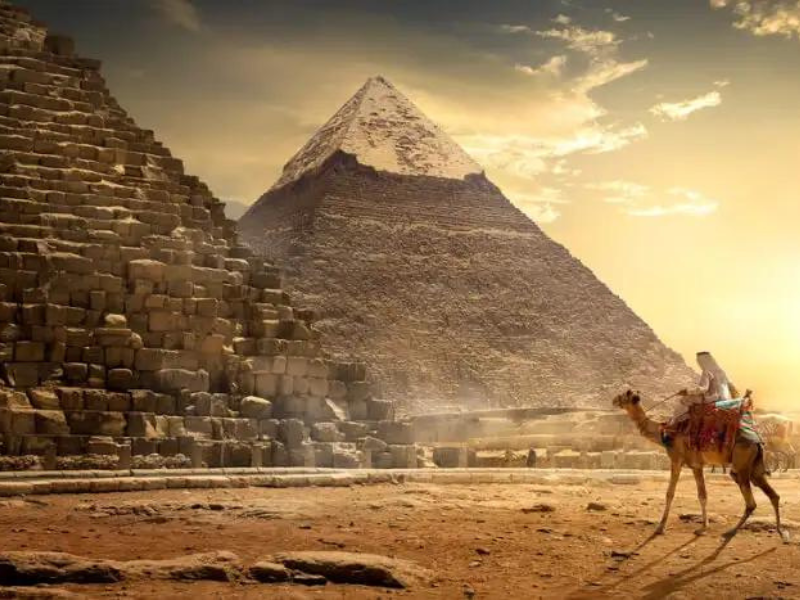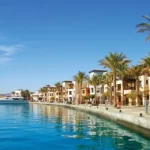Ancient Egyptian Civilization
Egypt’s history began in the pre-dynastic period around 7000 BC when small agricultural communities inhabited the region. These communities eventually grew into larger cities, and by 3100 BC, the first dynasty was established, marking the beginning of the Old Kingdom. During this time, Egypt experienced a golden age of prosperity and cultural growth, and some of the most impressive ancient monuments were built, including the pyramids at Giza and Saqqara.
Egypt’s ancient civilization was known for its impressive achievements in science, art, and architecture. The ancient Egyptians were skilled mathematicians, astronomers, and engineers, and they developed an intricate system of writing that is still studied and admired today. They also built magnificent temples, palaces, and tombs, many of which still stand today as a testament to their impressive achievements.
Famous Pharaohs
Egypt was also renowned for its powerful pharaohs, who ruled the land for thousands of years. Some of the most famous pharaohs include Tutankhamun, Ramses II, and Cleopatra VII. These leaders left a lasting legacy, not only in the form of monumental architecture and art but also in the form of laws, religion, and governance that still shape modern-day Egypt.
Tourism in Egypt
Aside from its rich history, Egypt is also known for its breathtaking natural beauty and vibrant tourist industry. One of Siwa’s most popular tourist destinations is an oasis in the western desert renowned for its natural hot springs, mud baths, and crystal-clear lakes. Visitors can also explore the Red Sea coast, where they can enjoy world-class diving and snorkeling, or take a cruise down the Nile River to see ancient temples and monuments.
Tourism is a vital industry in Egypt, accounting for a significant portion of the country’s economy. The government and local businesses have invested heavily in infrastructure and facilities to support the growing tourism industry, making it easier and more convenient for visitors to explore Egypt’s many attractions.
Egypt’s rich history, impressive architecture, and breathtaking natural beauty make it a fascinating and unique destination for tourists from around the world. From the ancient pyramids and temples to the modern cities and resorts, there is something for everyone to enjoy in this beautiful and diverse country. Whether you’re interested in history, culture, or adventure, Egypt is a destination that should be on everyone’s bucket list.
Another popular tourist destination is the Red Sea, which is famous for its stunning coral reefs, diverse marine life, and vibrant underwater world. The Red Sea is home to various unique and colorful species of fish, including clownfish, angelfish, and parrotfish, as well as a range of other marine creatures, such as dolphins, whales, and sea turtles.
In conclusion, Egypt has a rich and fascinating history and is a popular tourist destination, offering something for everyone. From the ancient monuments of its pharaohs to the stunning beauty of Siwa and the Red Sea, Egypt is a country that truly has it all.
In April 2021, Egypt held a spectacular event known as the Pharaohs’ Golden Parade, which saw the transportation of 22 ancient royal mummies from the Egyptian Museum in Tahrir Square to the National Museum of Egyptian Civilization in Fustat, a distance of about 5 miles.
The parade was a grand spectacle that involved an impressive display of ancient Egyptian culture and a celebration of the country’s heritage. It was a culmination of years of planning and preparation and was broadcast live on television to millions of viewers around the world.
The mummies, which included 18 kings and four queens, were transported in specially designed vehicles that resembled ancient Egyptian boats, complete with golden decoration and pharaonic designs. The mummies were placed in climate-controlled capsules, designed to protect them from any possible damage during transportation.
The parade route was lined with thousands of police and military personnel to ensure the safety of the mummies and the public. The streets were also adorned with decorations and lights, creating a festive atmosphere.
The Pharaohs’ Golden Parade was not just a spectacular display of ancient Egyptian culture, but it also had significant historical and cultural significance. The mummies, which had been carefully preserved for thousands of years, were a testament to the ancient Egyptian civilization’s technological prowess and their belief in the afterlife.
The Pharaohs’ Golden Parade was a remarkable achievement that showcased Egypt’s rich cultural heritage and its people’s pride in their country’s ancient past. It was a testament to the resilience and determination of the Egyptian people to preserve and protect their heritage and a celebration of the enduring legacy of the ancient pharaohs.
Playlist

0:16










